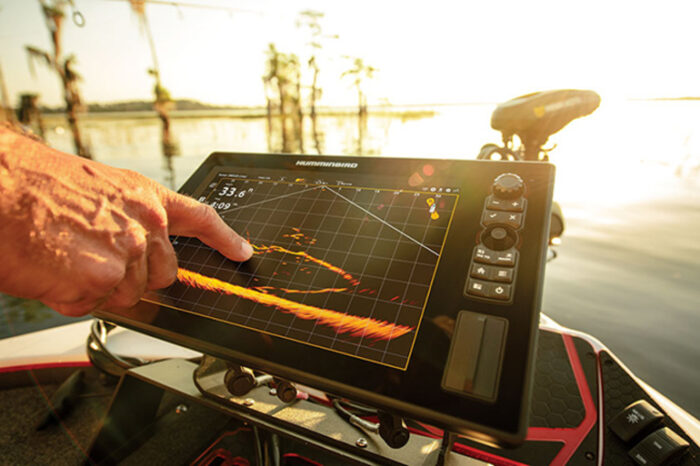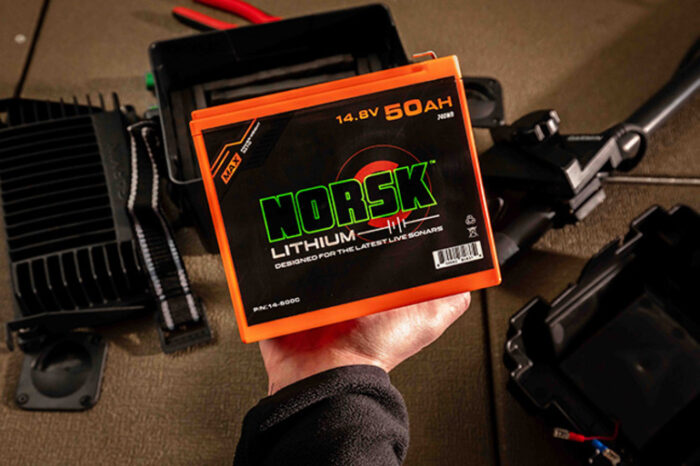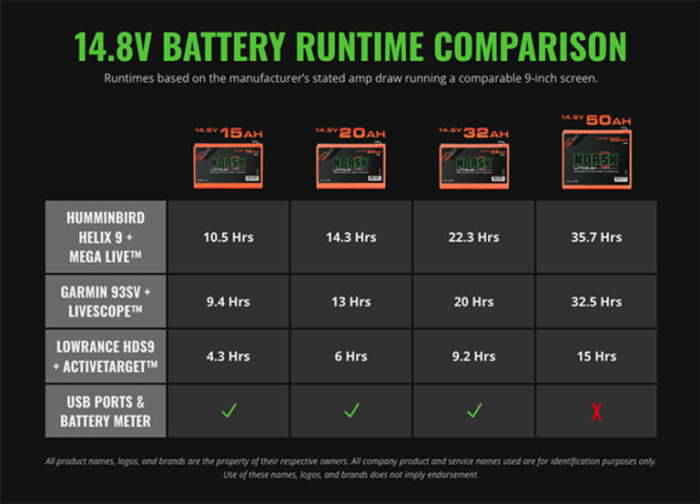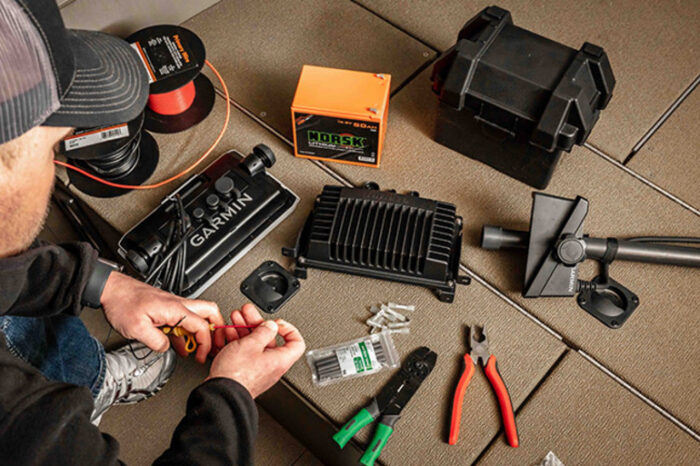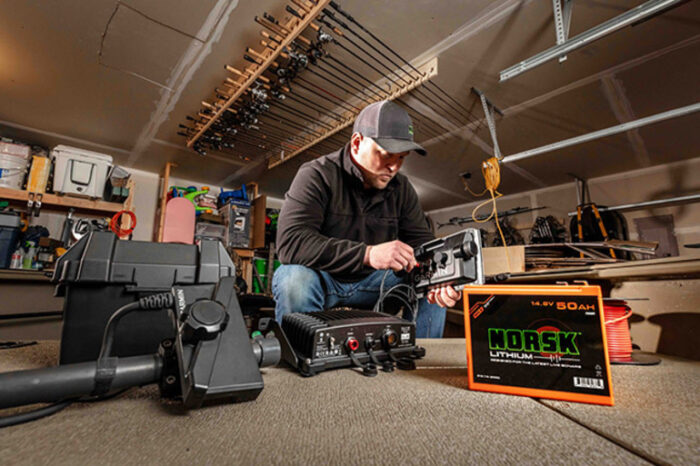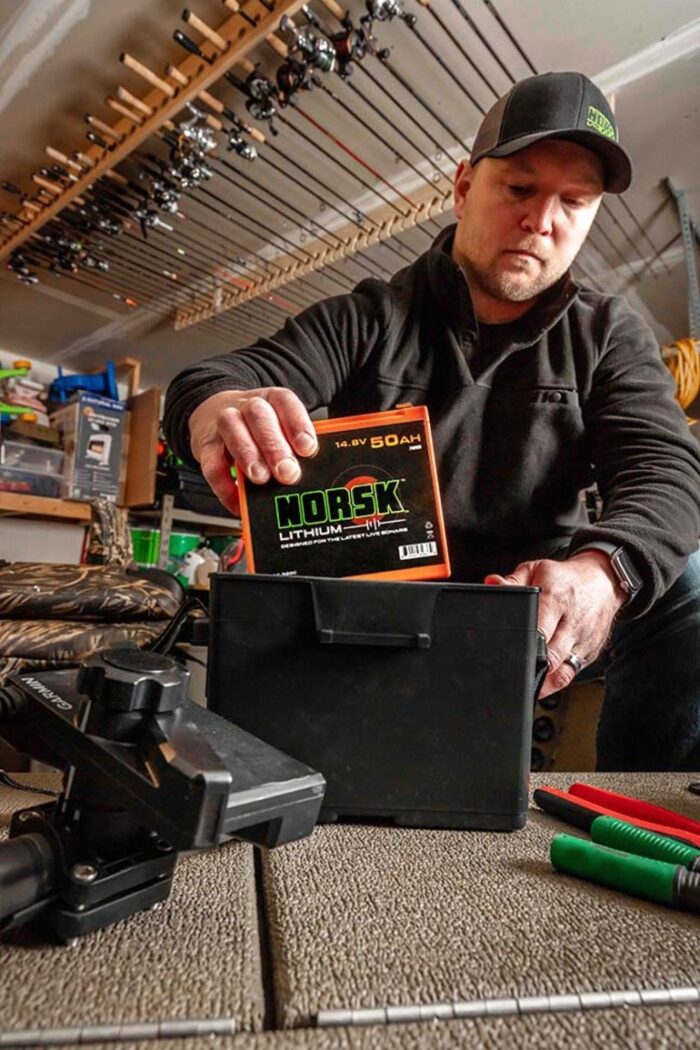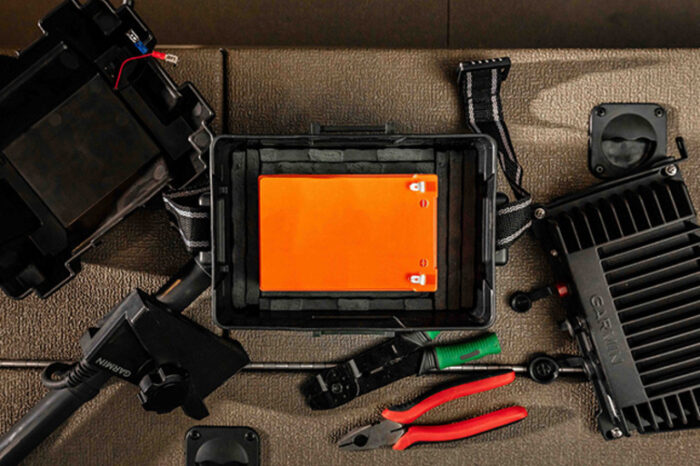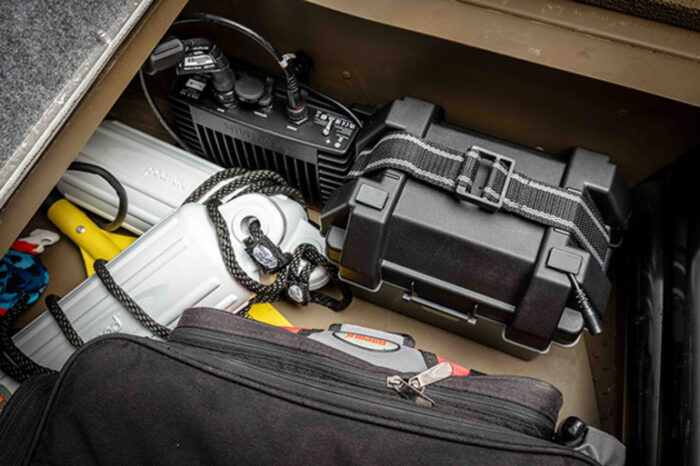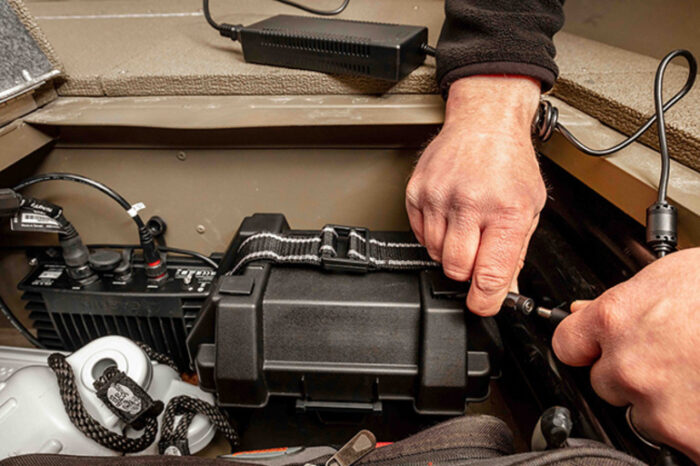Forward-Facing Sonar Solution
Originally designed as “the” battery to offer extensive power to portable, ice fishing forward-facing sonar units, Norsk Lithium’s “orange” line of 14.8v batteries” continues to sell in “completely unprecedented numbers” across the country, especially in the south… where there is no ice.
So, what’s going on?
“We’ve talked to a lot of the customers outside the Ice Belt who are buying our 14.8v batteries, and it comes down to a couple of things: they want to keep their forward-facing sonar unit power system compact and cost-effective, and they want a power supply that will allow them to get the most performance possible out of their investment in forward-facing sonar,” reports Norsk VP, Product Development, James Holst.
Holst says many of these customers are just entering the world of forward-facing sonar, whether it’s Garmin LiveScope, Humminbird MEGA Live, or Lowrance Active Target.
“The typical customer is not the angler running a 21- or 22-foot bass boat with extensive rigging and multiple lithium batteries,” continues Holst.
“This crowd is running 14- to 19-foot boats with one large screen and one FF sonar unit, where if they were forced to add another marine battery, they simply wouldn’t have the physical space. The FF sonar transducer/pole/trolling motor bracket, black box, cables, and screen are typically mounted in the bow and space is limited in these smaller boats. Many of the anglers we’ve talked to have told us finding space for a full-sized marine battery and charger simply was not possible given how little extra storage room is offered in smaller boats.”
The Norsk team says these anglers have no plans to power three or four graphs on their boat. They’re recent adopters of forward-facing sonar and looking for something—again, compact and cost-effective—to power a single FF sonar unit, large screen, and run the system all-day long with full screen brightness, imaging quality, and zero power issues.
Common-Sense, Third-Party Battery Box
Just like any other marine battery, proper installation is important and what’s interesting is these customers have found small, lawn tractor-like battery boxes at nearby farm stores and Amazon for around ten dollars that make installing a Norsk Lithium 14.8V 32AH or 50Ah battery super easy and secure.
These easily sourced, third-party boxes safely and securely enclose the battery and come with a top strap to pull tight to secure the battery within the box, and some anglers are putting a little closed cell foam in it to make sure it doesn’t wiggle at all.
“By the time you’re all said and done, the whole contraption costs a heck of a lot less than putting in a dedicated, larger marine house battery just for one graph and FF sonar unit, and provides the runtime and performance the user is looking for,” adds Holst.
Norsk Lithium technical support comments: “Using our 14.8v 50Ah orange battery and third-party tray combination ends up being a fraction of the size of full-sized marine battery when installed, so finding space for the battery is much easier.”
Then we’re finding out that they’re upgrading the Norsk 3 Amp plug-in charger that ships with the battery to our 7 Amp 12.6V Rapid Battery Charger, which fully charges the battery in 4.5 hours for the 32Ah and a little over 7 hours for the 50Ah at the end of a fishing day or two. Note – neither of these chargers are waterproof so best practice is to connect the charger when you need a charge and remove the charger from the boat when you’re out on the water.”
High Amps For All-Day Power, High Voltage for Brighter Imaging
This system also prevents the introduction of interference often experienced on graph screens when tapping into a dual-purpose AGM starting battery, which often also runs accessories in smaller fishing boats.
“It’s a dedicated power supply. It’s easy to find space for, it’s simple to install, and it’s clean, dedicated power,” adds Holst. “These guys will power FF sonar and graph solely from our 14.8V 50Ah orange battery, no other accessories like lights, radios, bilge pumps, livewell, etc. That’s a recipe for getting the absolute best performance out of an investment in forward-facing sonar.”
Battery Stats & Run-Times for FF Sonar Units
As mentioned, the 14.8V 50Ah orange battery is ultra-compact, coming in at 7 pounds. The 32Ah version weighs 4.85 pounds. You can literally hold either battery in the palm of your hand. However, despite their sized-down footprint, the nominal voltage is 14.8V, although when you first turn it on, it may read up to 16.9 volts.
What’s that mean?
The higher voltage allows for longer runtimes without the need to turn down screen brightness to squeak out a few extra hours on the water. This means you get to take advantage of brighter imaging, making it easier to see fish and your bait on your 8-inch or bigger graph screen and FF Sonar investment.
The Norsk technical team reports: “A 12-inch Garmin GPS mapping unit pulls about 2.2 Amps just to run the screen, then you add ¾ Amp for Live Scope, so that amounts to approximately 3 Amps in combination. If you do the math, 50 Amps divided by 3 gives you just under 17 hours of runtime, which is two long days on the water for most anglers. But we’re finding a lot of these customers are running 9-inch screens since that’s what’s offered in most portable FF Sonar & graph combo systems. Those runtimes are incredible for pretty much every brand.”
Is This System For You?
“You might be fishing a smaller boat but want to use today’s FF sonar technology for ‘anything that bites’. You might be a bass fisherman fishing from a smaller boat. Or you might be a crappie angler in a flat bottom boat, looking to spot fish in trees from the bow and pluck them out. Really, this system is for any angler looking to get into forward facing sonar who expects all-day power, a bright screen, and doesn’t want to carve out space for another giant marine battery and dedicated charger—while saving some money in the process,” concludes Holst.
Jeremy Mallette is co-founder of International Sportsman. An avid hunter and outdoorsman, he has spent more than a decade in the outdoor industry, from hiking and camping to silencers and hunting. His father taught him to shoot at age six, and he received his first firearm at age eight — a 1942 Colt Commando .38 special revolver. He enjoys yearly trips to Kansas for pheasant hunting, spending time with his children at the deer lease, and collecting unique firearms.

